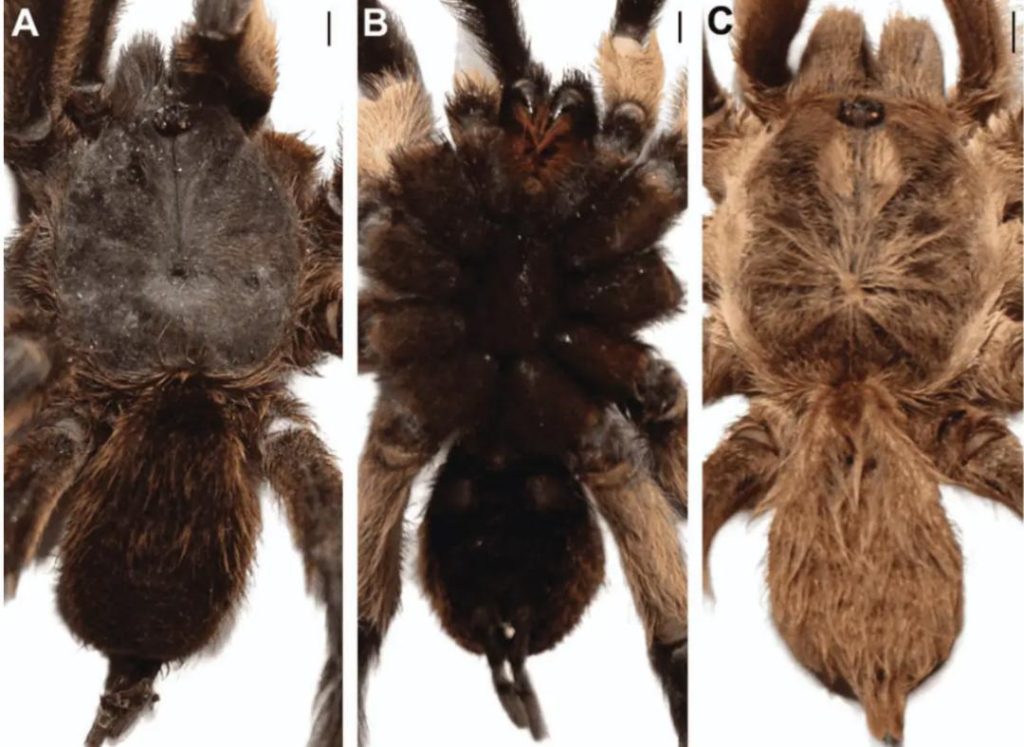
Title: Male Tarantula Evolved Extra-Long Genital to Survive Mating: Study
Deep in the deserts of the Arabian Peninsula and Horn of Africa, a fascinating discovery has been made by a team of researchers. The scientists have identified four new species of tarantulas, each with an extraordinary feature that sets them apart from their counterparts. These tarantulas possess extra-long genitalia, known as palps, located at the front of their mouth. This unique adaptation has sparked curiosity among scientists, who believe it has evolved as a survival mechanism for males during mating.
According to a recent study published in the journal ZooKeys, the extended palps of these male tarantulas have allowed them to mate from a safer distance, thereby reducing the risk of being attacked or killed by aggressive females. This remarkable finding sheds new light on the complex mating behaviors of these eight-legged creatures.
Female Tarantulas: The Aggressive Mates
In the world of tarantulas, mating is a high-stakes game. Female tarantulas are notorious for their aggressive behavior during mating, often attacking and killing their male counterparts. This phenomenon is not unique to these species, but it has become a defining characteristic of the tarantula mating process. Males, on the other hand, are equipped with a unique set of adaptations to ensure their survival during this critical phase.
The Discovery of Extra-Long Genitalia
Researchers from the Spanish Institute of Zoology and the University of Valencia led the expedition to the Arabian Peninsula and Horn of Africa. During their exploration, they discovered four new species of tarantulas, each with an extraordinary feature. The males of these species possess palps that are significantly longer than those found in other tarantula species. These extended palps are located at the front of the mouth, allowing males to mate from a distance.
The team of scientists believes that this extraordinary adaptation has evolved as a response to the aggressive behavior of female tarantulas. By mating from a safer distance, males can reduce the risk of being attacked or killed, thereby increasing their chances of survival. This remarkable discovery highlights the complexity and adaptability of these eight-legged creatures.
The Role of Adaptation in Evolution
The discovery of extra-long genitalia in male tarantulas serves as a testament to the power of adaptation in evolution. In a world where competition for resources is fierce, organisms must adapt to their environment in order to survive. In this case, the males of these tarantula species have evolved a unique adaptation that allows them to mate safely, thereby increasing their chances of reproduction.
This finding also highlights the importance of understanding the complex mating behaviors of tarantulas. By studying the intricacies of their mating process, scientists can gain a deeper understanding of the evolutionary pressures that drive the development of unique adaptations.
Implications for Future Research
The discovery of extra-long genitalia in male tarantulas opens up new avenues for future research. Scientists can now explore the evolutionary history of these species, examining the genetic and environmental factors that led to the development of this unique adaptation.
Moreover, this finding has implications for the conservation of tarantula species. By understanding the complex mating behaviors of these creatures, conservation efforts can be targeted more effectively, ensuring the survival of these remarkable species.
Conclusion
The discovery of extra-long genitalia in male tarantulas is a fascinating example of the power of adaptation in evolution. By mating from a safer distance, males can reduce the risk of being attacked or killed, thereby increasing their chances of survival. This remarkable finding highlights the complexity and adaptability of these eight-legged creatures, and opens up new avenues for future research.
As scientists continue to explore the natural world, they are constantly reminded of the importance of understanding the intricate relationships between organisms and their environment. The discovery of extra-long genitalia in male tarantulas serves as a testament to the power of adaptation, and the importance of continued research into the natural world.






